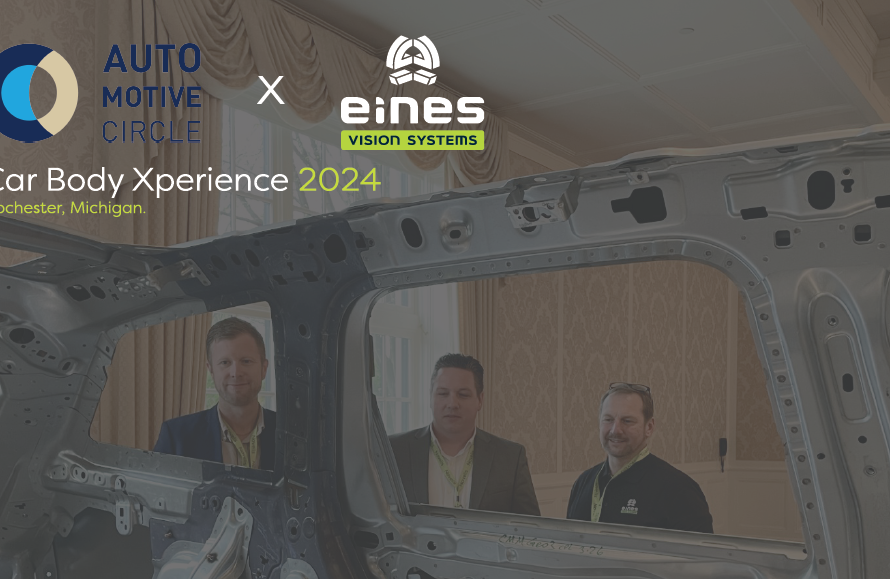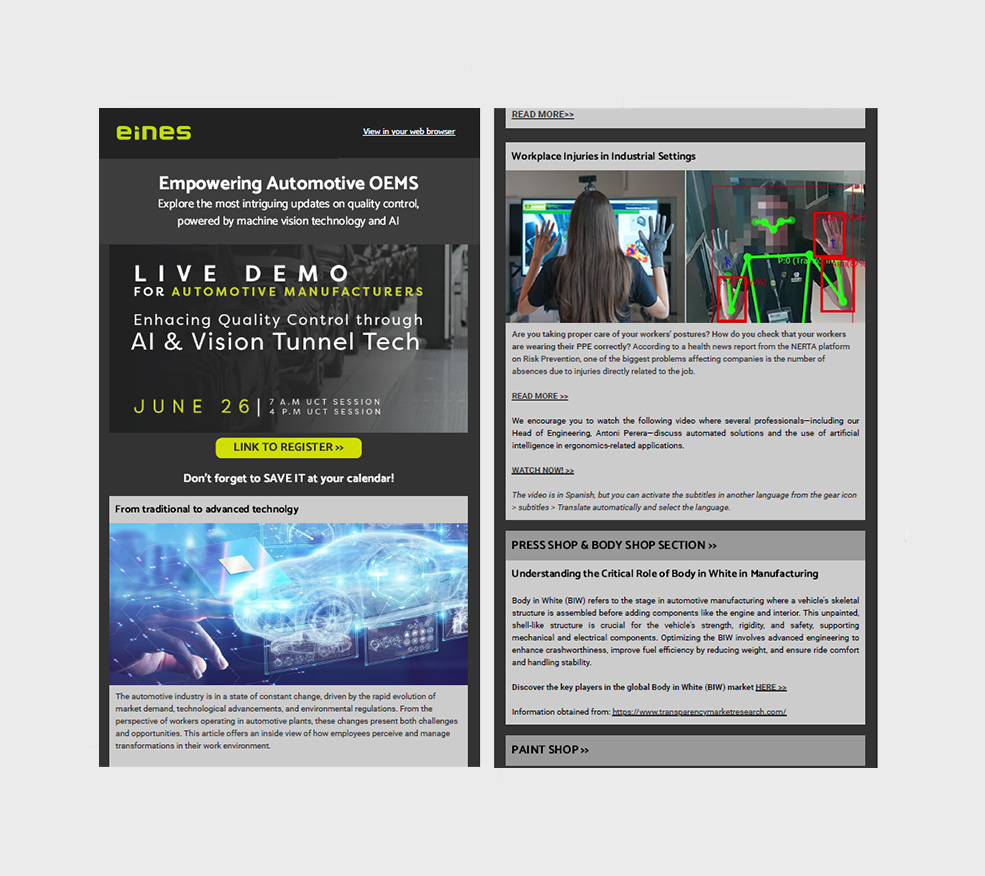The automotive industry is known for its high standards in terms of quality, safety and sustainability. Every component, from the engines to the chassis to the colour of the car, must meet stringent standards to ensure the performance and reliability of the vehicles. In this context, machine vision-based quality control solutions have been playing a key role for more than 30 years, just as AI is emerging as an innovative tool and answer to the challenges of automotive production.
Data & AI: a Revolution 5.0 in Preventive and Predictive Maintenance
Artificial vision involves the use of computerised systems to interpret and analyse visual images, thus obtaining a huge amount of data, which must be monitored and analysed in real time, for agile decision-making and actions to be implemented. Thanks to Depp Learning’s advanced algorithms, we are able to provide our systems with intelligence in order to anticipate possible events. As a result, in the automotive industry, this technology has become an essential tool for quality control. Instead of relying solely on human inspections, machine vision-based solutions offer a more accurate and efficient assessment of automotive components.
Benefits of machine vision-based quality control:
1- Unmatched Accuracy: Machine vision can identify even the smallest imperfections or defects in paint surfaces like our paint inspection tunnels or perform my precise Flush & Gap measurements. This ensures that quality standards remain consistently high, avoiding production failures and improving vehicle safety.
2- Speed and Efficiency: Machine vision systems can perform high-resolution inspections at outstanding speed, far exceeding human capability. This efficiency speeds up production processes, reducing manufacturing times and increasing productivity.
3- Preventive Maintenance: Early identification of defects through machine vision allows the implementation of preventive strategies to avoid errors, lost time or rework. By addressing potential problems before they become serious failures, the risk of costly production stoppages is minimised and the useful life of equipment is prolonged.
4- Predictive Maintenance: Collecting and analysing data through AI over time allows manufacturers to foresee wear patterns and anticipate when a specific component may need attention or replacement. This makes it easier to plan maintenance interventions proactively, avoiding costly unscheduled downtime.
5- Cost Reduction: Although the initial implementation of machine vision systems may require a significant investment, in the long term, these solutions contribute to a decrease in production and maintenance costs. Defect prevention and process optimisation translate into significant savings.
Challenges and Future of Machine Vision and AI in the Automotive Industry
Despite its benefits, the implementation of machine vision systems presents major challenges, such as the need for highly trained personnel to implement and maintain the solutions, as well as adaptability to ever-changing manufacturing environments. However, continuous investments in research and development, improving not only image quality, but also processing power and AI-based learning software, endow the systems with a certain intelligence, helping to overcome these obstacles and taking machine vision to new levels in the automotive industry.
In short, we are living the fifth industrial revolution in the automotive sector, thanks to multiple data and AI, achieved in real time in plant production through optimised machine vision systems, transforming the way quality control is approached in the automotive industry. From identifying defects to implementing predictive maintenance strategies, these solutions not only improve product quality, but also drive operational efficiency and long-term profitability, as well as sustainability and commitment to our social environment. As technology continues to advance, machine vision promises to remain a key pillar in the evolution of vehicle manufacturing, ensuring ever-higher quality standards.





